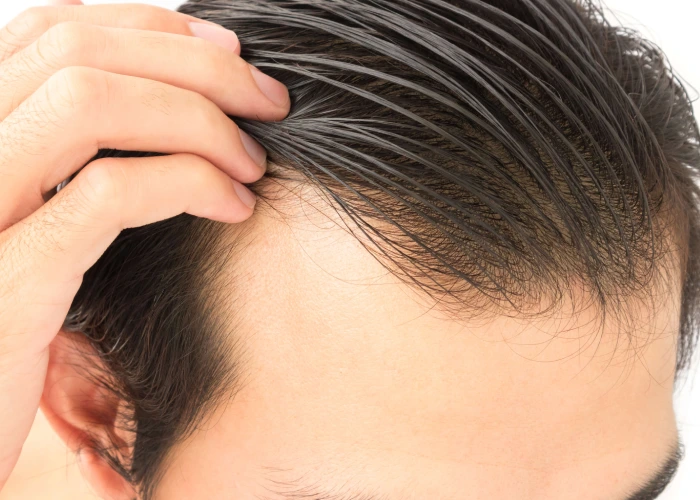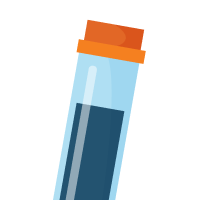Your hair transplant journey doesn’t end with the surgical procedure itself. In fact, the post-operative phase is equally crucial for ensuring a successful outcome and achieving the desired results. Proper post-hair transplant care can make all the difference in promoting optimal healing, minimising discomfort, and nurturing the newly transplanted hair follicles. In this comprehensive guide, we’ll explore essential tips and strategies to help you navigate the recovery process with confidence and maximise the benefits of your hair restoration investment.
Understanding the Healing Process
Before delving into the specifics of post-hair transplant care, it’s essential to understand the natural healing process that occurs after the procedure. Hair transplantation involves the meticulous extraction of individual hair follicles from the donor area (typically the back or sides of the scalp) and their precise implantation into the recipient area (the balding or thinning regions).
During the initial few weeks, the transplanted hair follicles undergo a temporary shedding phase, which is a normal and expected part of the healing process. This shedding occurs as the follicles adjust to their new environment and prepare for the growth of new, healthy hair strands.
The Importance of Proper Post-Hair Transplant Care
Adhering to a diligent post-hair transplant care routine is crucial for several reasons:
- Promoting Optimal Healing: Proper care helps minimise the risk of infection, reduce swelling and discomfort, and create an environment conducive to optimal healing.
- Protecting the Grafts: The transplanted hair follicles are delicate during the initial recovery phase. Appropriate care ensures that these grafts are not dislodged or damaged, allowing them to take root and thrive in their new location.
- Maximising Growth Potential: By following the recommended post-operative guidelines, you can optimise the growth potential of the newly transplanted hair follicles, leading to fuller, more natural-looking results.
- Minimising Scarring: Adhering to post-operative instructions can help minimise the appearance of scarring, ensuring a seamless and natural-looking outcome.
Immediate Post Hair Transplant Care
The first few days after your hair transplant are crucial for initiating the healing process and laying the foundation for successful results. Here are some essential tips to follow during this initial phase:
Protecting the Grafts
- Avoid touching or disturbing the transplanted area as much as possible. This helps prevent the dislodgement or damage of the newly implanted hair follicles.
- Refrain from scratching, rubbing, or applying excessive pressure to the treated area, as this can disrupt the healing process and potentially compromise the results.
- Consider wearing a loose-fitting hat or cap to protect the grafts from accidental contact or exposure to direct sunlight.
Managing Swelling and Discomfort
- Apply cold compresses or ice packs to the treated area as recommended by your surgeon. This can help reduce swelling, bruising, and discomfort.
- Take over-the-counter pain medication as directed by your healthcare provider to alleviate any discomfort or pain.
- Elevate your head while sleeping or resting to minimise swelling and promote proper drainage.
Hygiene and Wound Care
- Follow your surgeon’s instructions regarding washing and cleaning the transplanted area. Typically, you’ll be advised to gently cleanse the area with a mild, antimicrobial solution to prevent infection and promote healing.
- Avoid submerging the treated area in water (e.g., swimming pools, bathtubs) until your surgeon gives you the green light, usually after a few weeks.
- Refrain from applying any hair products, lotions, or ointments to the transplanted area unless specifically recommended by your healthcare provider.
Ongoing Post Hair Transplant Scalp Care
Proper scalp care is essential during the recovery phase to ensure optimal healing and prevent any potential complications. Here are some key considerations:
Gentle Cleansing
- Use a gentle, sulfate-free shampoo recommended by your surgeon to gently cleanse the scalp and transplanted area.
- Follow the instructions provided by your healthcare provider regarding the frequency and technique of shampooing.
- Avoid vigorous scrubbing or massaging the scalp, as this can dislodge or damage the newly implanted hair follicles.
Hydration and Moisturisation
- Keep the scalp and transplanted area hydrated by using a moisturising conditioner or a post-operative scalp treatment as recommended by your surgeon.
- Avoid using harsh or drying hair products that could irritate the sensitive scalp during the recovery phase.
Sun Protection
- Protect the treated area from direct sunlight exposure by wearing a loose-fitting hat or cap when outdoors.
- Apply a broad-spectrum sunscreen with an SPF of 30 or higher to the exposed areas of the scalp to prevent sunburn and promote healing.
Avoiding Irritants
- Refrain from using hair dyes, bleaches, or other chemical treatments on the transplanted area until your surgeon gives you the go-ahead, typically after several months.
- Avoid exposing the treated area to excessive heat, such as from hair dryers, straighteners, or curling irons, as this can damage the newly implanted hair follicles.
Lifestyle Adjustments
During the recovery period, it’s essential to make certain lifestyle adjustments to support the healing process and optimise the results of your hair transplant. Here are some key considerations:
Physical Activity
- Avoid strenuous physical activity, heavy lifting, or exercises that cause excessive sweating for the first few weeks after your hair transplant.
- Gradually reintroduce physical activity as advised by your surgeon, starting with light exercises and gradually increasing the intensity over time.
Sleep Positioning
- Sleep on your back or side to prevent direct pressure or friction on the transplanted area during the initial recovery phase.
- Use a travel pillow or neck support to keep your head elevated and minimise swelling.
Dietary Considerations
- Maintain a balanced and nutritious diet rich in proteins, vitamins, and minerals to support the healing process and promote healthy hair growth.
- Stay hydrated by drinking plenty of water and avoiding excessive alcohol consumption, which can dehydrate the body and potentially impair healing.
Stress Management
- Engage in stress-reducing activities, such as meditation, yoga, or deep breathing exercises, as stress can potentially impact the healing process and hair growth.
- Avoid smoking and exposure to secondhand smoke, as these can impair circulation and potentially hinder the recovery process.
Monitoring for Potential Complications
While complications after a hair transplant are relatively rare, it’s essential to be aware of potential issues and seek prompt medical attention if necessary. Here are some signs to watch out for:
Infection
- Signs of infection include increased redness, swelling, warmth, pain, or pus discharge at the transplanted area.
- Fever or chills may also indicate the presence of an infection and should be reported to your healthcare provider immediately.
Excessive Bleeding or Oozing
- While some minor bleeding or oozing is expected in the initial days after the procedure, excessive or persistent bleeding should be addressed promptly.
Numbness or Tingling
- Temporary numbness or tingling in the transplanted area is common, but if these sensations persist or worsen, it’s essential to consult your surgeon.
Excessive Itching or Discomfort
- While some itching or discomfort is normal during the healing process, excessive or persistent discomfort should be evaluated by your healthcare provider.
By being vigilant and promptly addressing any concerning symptoms, you can ensure a smooth and successful recovery process.
Hair Growth and Maintenance
As the recovery phase progresses, you’ll begin to notice the exciting stages of new hair growth. Here’s what to expect and how to properly maintain your newly transplanted hair:
The Shedding Phase
- Within the first few weeks after your hair transplant, you’ll notice the transplanted hair shedding or falling out. This is a normal and expected part of the hair growth cycle.
- Do not be alarmed by this shedding, as it is a temporary phase that allows the newly implanted follicles to prepare for the growth of new, healthy hair strands.
New Hair Growth
- Typically, around 3 to 4 months after the procedure, you’ll begin to see the first signs of new hair growth emerging from the transplanted follicles.
- This new hair growth will initially appear fine and delicate, gradually thickening and strengthening over time.
Ongoing Maintenance
- Once the new hair growth is well-established, you can gradually reintroduce your regular hair care routine, using gentle, sulfate-free products recommended by your surgeon.
- Avoid excessive styling, heat, or chemical treatments that could damage the newly transplanted hair until it has fully matured and stabilised, typically around 12 to 18 months after the procedure.
Professional Follow-up
- Attend all scheduled follow-up appointments with your hair transplant surgeon to monitor the progress of your hair growth and address any concerns or questions you may have.
- Your healthcare provider may recommend additional treatments or maintenance procedures to optimise the long-term results of your hair transplant.
By following these guidelines and maintaining open communication with your healthcare team, you can ensure the best possible outcome and enjoy the confidence-boosting benefits of your hair restoration journey.
Embracing Patience and Realistic Expectations
While the prospect of regaining a full head of hair is exciting, it’s crucial to embrace patience and maintain realistic expectations throughout the post-hair transplant recovery process. Here are some important considerations:
Gradual Results
- The results of a hair transplant are not immediate. It can take several months, or even up to a year, to see the full extent of the new hair growth.
- During this time, it’s essential to remain patient and trust the natural growth process, as rushing or attempting to accelerate the results can be counterproductive.
Individual Variations
- Every individual’s hair growth pattern and rate can vary, influenced by factors such as age, genetics, and overall health.
- Avoid comparing your progress to others or setting unrealistic expectations based on someone else’s experience.
Managing Expectations
- Understand that while a hair transplant can significantly improve the appearance of thinning or balding areas, it may not restore the same density or pattern as your natural, pre-hair loss state.
- Discuss your expectations with your surgeon during the consultation process to ensure a clear understanding of the achievable results.
Embracing the Journey
- Embrace the hair transplant journey as a transformative experience, focusing on the positive impact it can have on your self-confidence and overall well-being.
- Celebrate the milestones along the way, such as the first signs of new growth or the gradual thickening of your hair, as these are tangible reminders of the progress you’re making.
By maintaining a positive mindset, managing your expectations, and embracing the journey with patience and perseverance, you’ll be better equipped to appreciate the remarkable results of your hair transplant and enjoy the newfound confidence that comes with a fuller, more youthful head of hair.
Lifestyle Habits for Long-Term Hair Health
While proper post-hair transplant care is essential for optimal recovery, maintaining healthy lifestyle habits can also contribute to the long-term success and longevity of your hair transplant results. Here are some key practices to consider:
Nutrition and Supplementation
- Ensure a balanced diet rich in essential nutrients, such as proteins, vitamins (particularly biotin and vitamins B, C, and E), minerals (like zinc and iron), and omega-3 fatty acids, which are known to support healthy hair growth.
- Consider incorporating hair-friendly supplements, such as biotin, saw palmetto, or pumpkin seed oil, after consulting with your healthcare provider.
Stress Management
- Chronic stress can contribute to hair loss and potentially impact the success of your hair transplant.
- Engage in stress-reducing activities like meditation, yoga, or regular exercise to promote overall well-being and support healthy hair growth.
Hydration
- Adequate hydration is crucial for maintaining healthy hair follicles and promoting optimal hair growth.
- Aim to consume at least 8 glasses of water daily and limit your intake of diuretic beverages, such as coffee and alcohol, which can contribute to dehydration.
Sleep and Rest
- Ensure you get sufficient sleep and rest, as these are essential for overall health and well-being, including hair health.
- Aim for 7-9 hours of quality sleep each night, and consider incorporating relaxation techniques like deep breathing or meditation to promote better sleep.
Regular Exercise
- Engage in regular, moderate exercise to promote overall health and improve circulation, which can benefit hair growth.
- However, avoid excessive or high-impact activities that could potentially dislodge or damage the transplanted hair follicles during the initial recovery phase.
By adopting a holistic approach to your lifestyle and prioritising healthy habits, you can create an environment that supports the long-term success of your hair transplant and maintains the vibrant, youthful appearance of your newly restored hair.
Managing Hair Loss Triggers
While a hair transplant can effectively address existing hair loss, it’s essential to be proactive in managing potential triggers that could contribute to future hair thinning or shedding. Here are some common factors to be aware of and strategies to mitigate their impact:
Hormonal Imbalances
- Hormonal fluctuations, particularly those related to testosterone and dihydrotestosterone (DHT), can contribute to hair loss in both men and women.
- Consult with a healthcare professional to assess your hormone levels and explore potential treatments, such as medication or supplements, to help regulate hormonal imbalances.
Stress and Emotional Factors
- Chronic stress and emotional distress can disrupt the hair growth cycle and potentially lead to hair thinning or shedding.
- Incorporate stress management techniques, such as meditation, yoga, or counselling, to address emotional triggers and promote overall well-being.
Medical Conditions and Medications
- Certain medical conditions, such as thyroid disorders, autoimmune diseases, or nutritional deficiencies, can contribute to hair loss.
- Additionally, some medications, including chemotherapy drugs, blood thinners, and certain antidepressants, can have hair loss as a side effect.
- Work closely with your healthcare provider to manage underlying medical conditions and explore alternative medication options if necessary.
Environmental Factors
- Exposure to harsh chemicals, excessive heat, or pollution can damage hair follicles and contribute to hair thinning or shedding.
- Protect your hair by using gentle, sulfate-free hair products, minimising heat styling, and limiting exposure to environmental pollutants.
By proactively addressing potential hair loss triggers and implementing preventative measures, you can help maintain the long-term success of your hair transplant and enjoy the confidence-boosting benefits of a full, healthy head of hair.
Scalp Massage after a Hair Transplant
In addition to following a comprehensive post-hair transplant care routine, certain techniques can help stimulate blood flow and promote the growth of newly transplanted hair follicles, in particular scalp massage:
- Gentle scalp massage can increase blood circulation to the hair follicles, delivering essential nutrients and oxygen to support hair growth.
- Use your fingertips to gently massage the scalp in circular motions, applying light to moderate pressure.
- Avoid vigorous or aggressive massaging, as this can dislodge or damage the transplanted hair follicles, particularly during the initial recovery phase.
While scalp massage can be beneficial, it’s crucial to exercise caution and follow your hair transplant provider’s recommendations, especially during the initial recovery phase. These techniques should be introduced gradually and with proper precautions to avoid compromising the healing process or damaging the newly transplanted hair follicles.
Dealing with Post-Operative Anxiety and Emotional Support
Undergoing a hair transplant can be an emotional journey, and it’s not uncommon to experience feelings of anxiety or stress during the recovery process. Here are some strategies to help you navigate these emotional challenges:
Seeking Professional Support
- If you find yourself struggling with anxiety, depression, or other emotional difficulties, consider seeking the guidance of a mental health professional, such as a therapist or counsellor.
- They can provide valuable coping strategies and support to help you manage your emotions and maintain a positive mindset throughout the recovery process.
Connecting with Others
- Joining support groups or online communities can be a valuable resource for connecting with others who have undergone similar experiences.
- Sharing your journey and learning from others can provide a sense of camaraderie and help you feel less alone in your recovery process.
Practicing Mindfulness and Relaxation Techniques
- Incorporate mindfulness practices, such as meditation, deep breathing exercises, or yoga, to help manage stress and anxiety during the recovery period. These techniques can promote a sense of calm and emotional well-being, allowing you to focus on the present moment and embrace the healing process with greater ease.
Engaging in Enjoyable Activities
- Make time for activities that bring you joy and relaxation, such as reading, listening to music, or pursuing a hobby you find fulfilling.
- Engaging in enjoyable pastimes can serve as a positive distraction and help you maintain a balanced perspective throughout the recovery journey.
Celebrating Small Victories
- Acknowledge and celebrate the milestones along the way, no matter how small they may seem.
- Whether it’s the first signs of new hair growth or a reduction in swelling, recognising these achievements can boost your confidence and provide motivation to continue on your path to a successful recovery.
Remember, the emotional journey is just as important as the physical one, and seeking support when needed can make a significant difference in your overall well-being and satisfaction with the hair transplant process.
Long-Term Maintenance and Touch-Up Procedures
While a hair transplant can provide long-lasting and natural-looking results, it’s essential to understand that ongoing maintenance and potential touch-up procedures may be necessary to maintain the desired appearance over time. Here are some considerations for the long-term care of your hair transplant:
Ongoing Monitoring
- Attend regular follow-up appointments with your hair transplant surgeon to monitor the progress of your hair growth and address any concerns or issues that may arise.
- Your healthcare provider can assess the need for any additional treatments or adjustments to optimise the long-term results.
Touch-Up Procedures
- Depending on individual factors, such as the extent of hair loss or the natural aging process, some patients may require touch-up procedures to maintain the desired density and fullness of their hair.
- These touch-up procedures typically involve transplanting additional hair follicles to areas where thinning or shedding has occurred.
Maintaining Healthy Lifestyle Habits
- Continuing to follow a healthy lifestyle, including a balanced diet, regular exercise, stress management, and proper scalp care, can contribute to the longevity of your hair transplant results.
- Adopting habits that promote overall well-being can help minimise the risk of future hair loss and support the ongoing health of your transplanted hair.
Addressing Potential Hair Loss Triggers
- Be proactive in managing potential hair loss triggers, such as hormonal imbalances, medical conditions, or environmental factors, by working closely with your healthcare provider and implementing preventative measures as needed.
By embracing a long-term commitment to maintaining the results of your hair transplant, you can enjoy the confidence-boosting benefits of a full, natural-looking head of hair for years to come.
Choosing the Right Hair Transplant Clinic in Australia
The success of your hair transplant journey largely depends on the expertise and experience of the clinic and surgeon you choose. Here are some key factors to consider when selecting a hair transplant provider:
Qualifications and Experience
- Look for a hair transplant clinic staffed by board-certified surgeons with extensive experience and specialised training in hair restoration procedures.
- Inquire about the surgeon’s credentials, years of experience, and the number of hair transplants they have performed.
Technique and Technology
- Ensure the clinic utilises advanced techniques, such as Follicular Unit Extraction (FUE) or Follicular Unit Transplantation (FUT), and state-of-the-art technology for precise and minimally invasive hair transplantation.
- Ask about the specific techniques and equipment used, as well as the clinic’s commitment to staying up-to-date with the latest advancements in the field.
Patient Testimonials and Before-and-After Photos
- Review patient testimonials and before-and-after photos to gauge the clinic’s track record and the quality of their results.
- A reputable clinic should be transparent and willing to share examples of their work and patient experiences.
Personalised Consultation and Treatment Plan
- Look for a clinic that offers personalised consultations and tailored treatment plans based on your individual needs, goals, and hair loss patterns.
- A comprehensive evaluation and open communication with the surgeon are essential for achieving optimal results.
Aftercare and Follow-Up Support
- Inquire about the clinic’s post-operative care protocols and the level of support and guidance provided during the recovery process.
- A reputable clinic should offer comprehensive aftercare instructions and be available to address any concerns or questions that may arise.
By thoroughly researching and selecting a reputable hair transplant clinic and experienced surgeon, you can increase your chances of achieving successful, natural-looking results and a positive overall experience throughout your hair restoration journey.
In conclusion, post-hair transplant care is a crucial aspect of ensuring optimal recovery and achieving the desired results. By following the tips and strategies outlined in this comprehensive guide, you can navigate the recovery process with confidence, minimise discomfort, and promote the healthy growth of your newly transplanted hair follicles. Remember, patience, diligence, and a commitment to maintaining a healthy lifestyle are key to maximising the long-term success of your hair transplant. With the right care and support, you can embrace the transformative power of hair restoration and regain the confidence that comes with a full, natural-looking head of hair.
If you’re considering a hair transplant, trust the expertise of Hair and Skin Science, the largest clinic for hair loss and hair rejuvenation in Australia. Led by experienced Australian doctors, our medical cosmetic services include FUE hair transplants. Contact Hair and Skin Science today to schedule your consultation and take the first step towards restoring your hair and your confidence





